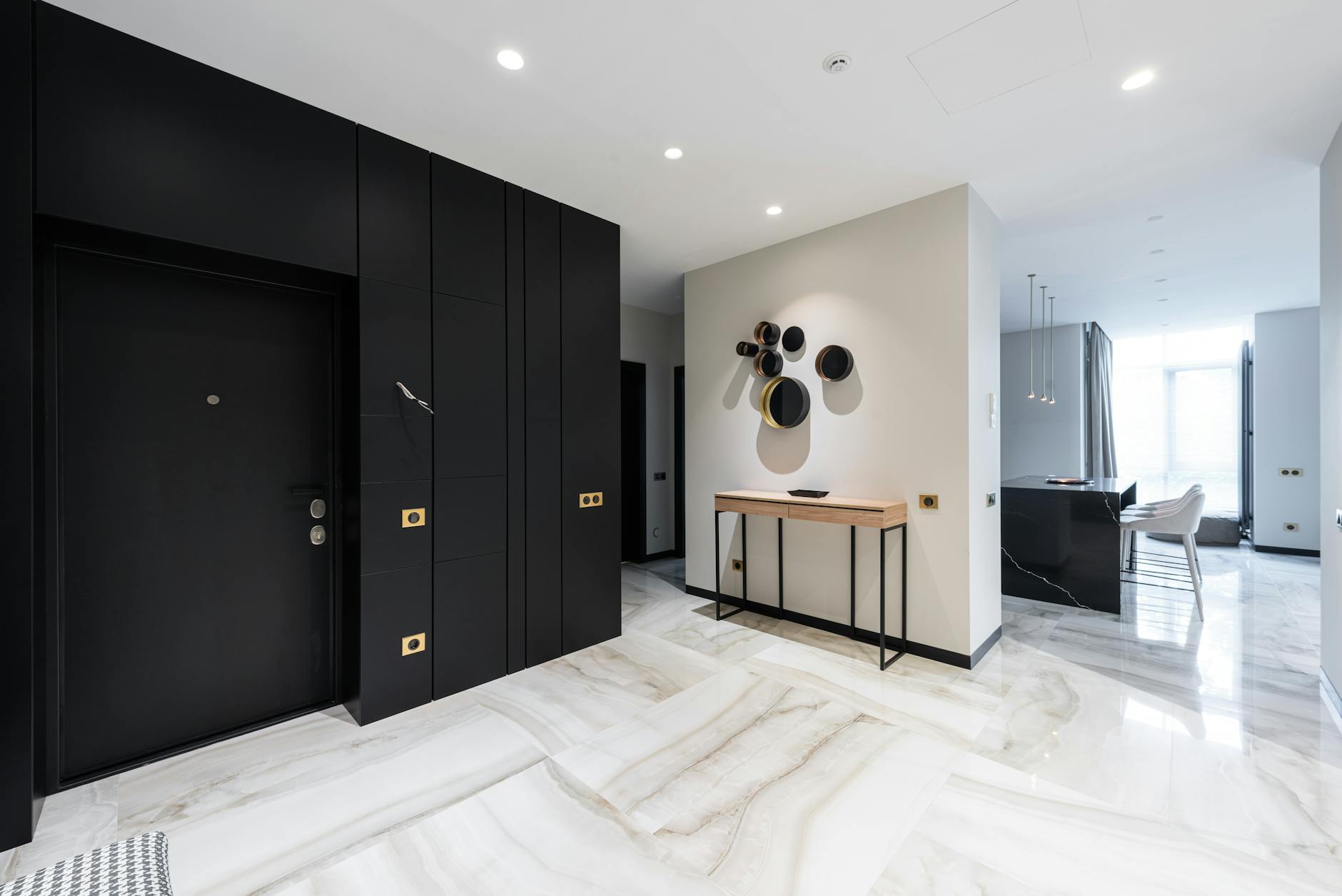Is Smart Technology the Key to Australia’s Real Estate Success?

Exploring Smart Technology
When delving into the rapidly evolving world of smart home technology, it's paramount to keep in mind not just the bells and whistles but practical integration strategies. As a smart home technology specialist based in Melbourne, the tech-centric aura of South Melbourne Market never ceases to inspire me. Picture this: a morning stroll through the market, envisioning how seamlessly smart devices could transform everyday living into an efficient, intuitive experience.
Smart home devices are the backbone of modern living, offering conveniences and energy efficiency that appeal both to tech enthusiasts and property investors alike. For those considering investment in areas featuring houses for sale Kinglake, the integration of these devices can dramatically enhance the appeal of a home. Think about automated lighting, voice-controlled assistants, and advanced security systems, all contributing to an energy-efficient footprint. These innovations not only elevate your living space but hold potential to increase property value significantly.
The journey into Melbourne's innovative real estate landscape also hints at exciting opportunities, especially with Melbourne property agents exploring smart technology integration in urban developments. Imagine a property where every feature is at your fingertips, easy to manage on a single interface. As you aim to blend architectural creativity with technological solutions, consider checking out a Newport house for sale for potential investment. These locations capture the essence of what smart living can truly achieve, making your home a hub of innovation and comfort.
Impact on Real Estate
Enhancing Property Value
Integrating smart home technology is an excellent strategy to appreciate property value, particularly in vibrant areas like Melbourne's innovation-centric Docklands. With a focus on Victoria display homes, potential homeowners can witness firsthand how these smart solutions bring convenience and efficiency to life. By incorporating advanced security systems, automated lighting, and smart thermostats, properties can attract higher bids, leading to a more competitive market presence. Furthermore, energy-efficient innovations not only promote sustainability but also reduce utility costs, adding another layer of appeal to prospective buyers.
Boosting Market Appeal
Incorporating smart technology is especially appealing for houses for sale in Sydenham and similar suburbs. The tech-savvy features in modern homes tap into an emerging demand among younger generations. Features such as voice-activated assistants, smart locks, and energy management systems make everyday living more efficient and adaptable. It's essential to highlight these advanced applications during property tours or listings to draw attention to their utilitarian benefits.
Facilitating Remote Monitoring
Smart home technology also enhances remote monitoring possibilities. Such features are particularly attractive for tech enthusiasts looking for houses for sale Spotswood. Whether it's security cameras accessible via smartphone or energy consumption controlled remotely, these capabilities offer homeowners peace of mind and control no matter where they are. This level of convenience adds a layer of modernity to residential properties, ensuring they're ready for the future.
Challenges in Adoption
Data Privacy Concerns
As the smart home technology landscape evolves, one of the biggest hurdles remains ensuring data privacy. Many users are concerned about how their personal data is collected, stored, and used. It's crucial to select devices and platforms that prioritise encrypting user information and offer transparent data management policies. When you're involved in the property market, like those interested in property for sale Werribee, pre-emptively addressing these concerns can build trust and confidence among potential buyers.
Compatibility Issues
Another challenge lies in the compatibility of smart devices with existing home infrastructure. Enthusiasts often find themselves battling with devices that do not easily integrate with each other, causing frustration. A practical tip for seamless integration is to opt for systems compatible with widely-used protocols such as Zigbee or Z-Wave, ensuring a harmonised experience. This is particularly relevant when exploring modern developments like Sunshine West houses for sale, where a unified smart system can significantly enhance living experiences.
Learning Curves for Consumers
Finally, the learning curve for adopting this technology can be steep, especially for those not as technically inclined. For technology enthusiasts, understanding the ins and outs of installation and maintenance is key to overcoming this barrier. Practical steps include participating in workshops or consulting with smart tech specialists, which may even be hosted in technology-centric hubs like Melbourne's Docklands. By tackling these challenges head-on, the journey toward a smart, efficient home becomes far more attainable.
Action Items for Architects
Staying Informed on Trends
As an architect embarking on the journey of integrating smart home technology, it's paramount to stay updated on the latest trends and innovations driving this space. By diving into tech-centric markets, like Melbourne's innovation-centric Docklands, you'll find inspiration and insights on the latest developments. Keep abreast of new technologies through industry magazines, design forums, and technology newsletters. Additionally, engaging with platforms showcasing emerging smart home devices can enhance your understanding and pave the way for informed design decisions.
Collaborating with Tech Experts
The integration of smart technology in homes is a collaborative process. Partnering with tech experts can provide invaluable insights that bridge gaps between architecture and technology. Consider reaching out to professionals in smart home technology to explore how elements like automated lighting and security can be seamlessly incorporated into your designs. This partnership will not only improve the functionality of your projects but also ensure that every smart solution is customized to meet the unique requirements of each home.
Designing for Smart Solutions
When you approach the architectural design of modern homes, it's essential to consider the integration of smart features from the outset. Focus on crafting spaces that are adaptable to emerging technologies. For example, implementing flexible wiring systems to accommodate future smart upgrades. Additionally, think about designing efficient layouts that optimise natural light and ventilation, alongside smart energy solutions, to make the home more sustainable. If you keep these factors in mind while designing, your projects will attract tech-savvy homeowners browsing houses for sale in Whittlesea and houses for sale Truganina.
Avoiding Common Pitfalls in Smart Home Design
Prioritising User Experience
When diving into the world of smart home technology, one often underestimated aspect is the user experience. With a wealth of devices vying for attention, from smart blinds that adjust to the scenic views from the Royal Botanic Gardens to integrated lighting systems like those seen in Melbourne's innovation-centric Docklands, ensuring an intuitive interface is essential. Missteps here can lead to frustration instead of convenience. A visit to the tech-focused South Melbourne Market might provide inspiration, showcasing seamless tech solutions that blend form with function.
Addressing Maintenance Needs
Another pitfall to beware of is overlooking the maintenance needs of smart systems. Whether you're dealing with voice-activated assistants or energy-saving solutions, regular updates and troubleshooting are crucial to keeping everything running smoothly. Imagine the consequences of a crucial system like a smart thermostat malfunctioning in the middle of a Melbourne winter! Regular check-ups and software updates ensure devices remain efficient and reliable.
Adapting System Flexibility
Finally, do not make the mistake of neglecting the importance of system flexibility. A robust smart home should be able to adapt and expand as new technologies emerge. Avoid locking yourself into rigid systems that don't allow for upgrades. This adaptability is particularly crucial in an ever-evolving field where innovation occurs at a rapid pace, much like in Melbourne's tech-hub areas.
Learning from these areas ensures that your smart home designs are both cutting-edge and practical, offering seamless integration into dynamic city landscapes.


